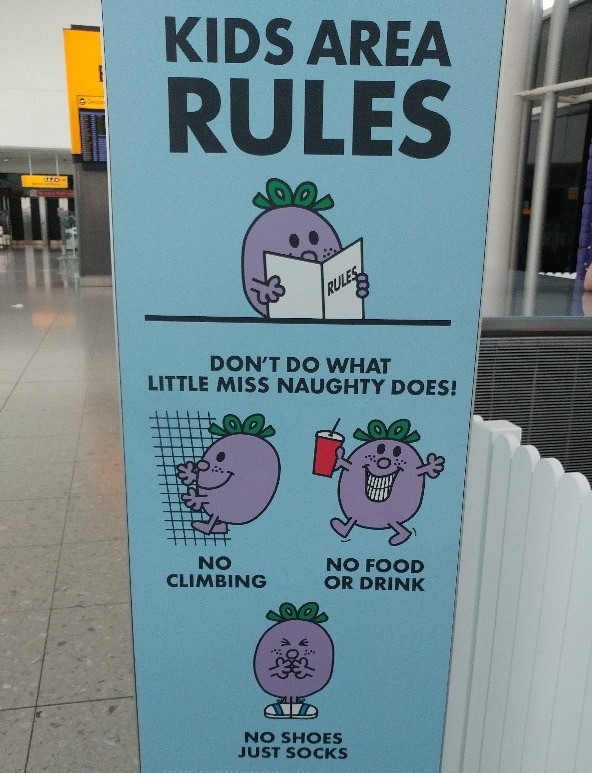The sign made me wince. While it’s clear the authorities at Heathrow Airport in London love kids, the rules posted at a dedicated play area set visiting children up for trouble.
 Most kids can’t read these words until the age of six or seven – and that’s if they’re focused (a rare state for any child moving through an airport). Which means, of course, that the child will rely on the visuals: images communicating the very thing authorities don’t want them to do.
Most kids can’t read these words until the age of six or seven – and that’s if they’re focused (a rare state for any child moving through an airport). Which means, of course, that the child will rely on the visuals: images communicating the very thing authorities don’t want them to do.
It’s the same for adults. Brains are brains: When told no, don’t or quit, the vision that’s transmitted is the opposite of what we want people to think about.
The challenge is that human brains are wired to identify risks or threats. This is why too often employees are super clear on what shouldn’t happen, but what success looks like remains nebulous.
Effective leaders, when communicating the rules or setting expectations, acknowledge risks or threats when necessary – then quickly shift the focus to what must occur in order for the team to succeed. Doing so is important because the average work environment is much like an airport: everyone’s going in different directions and running fast with their own agendas.
Under such conditions, there’s no time to translate or de-code “no” and “don’t” messages. We must act quickly. And we can when an image of success is clear.
Does your team know what success looks like?

